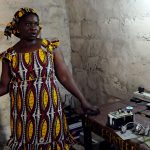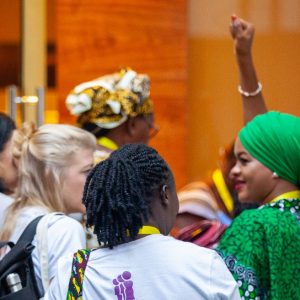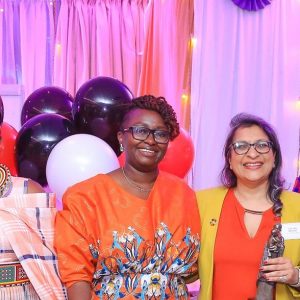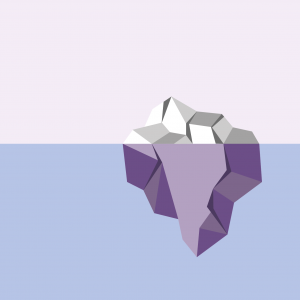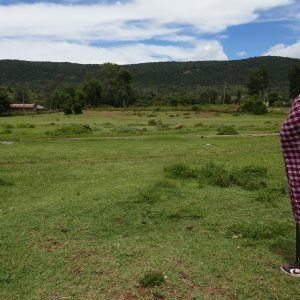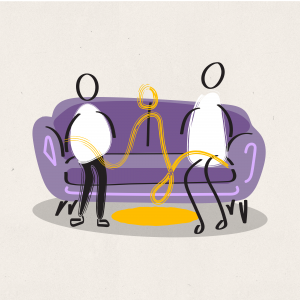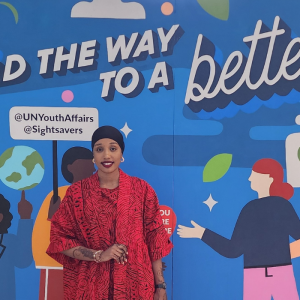Lucy, our Knowledge and Programmes Coordinator, spent two weeks in Senegal participating in the pilot of the Tostan Training Centre (TTC). Below is part one of a five part blog series…
Introductions
Tostan’s first training centre started as it meant to go on: a wonderful welcome by staff from the field, training centre and head office which involved us all singing and dancing to beautiful kora music.
After a round of intros we split into groups to discover more about each other and our expectations for the ten days. My group consisted of: Lor, working with the Carter Centre in Liberia on conflict resolution who was soon to become the energising joker of the group; Rachel, working with WTWT on women’s empowerment in Tanzania; and Cess, Programme Officer at Orchid Project’s partner organisation ECAW working to end FGC in Kuria, Kenya. Our expectations for the week included to learn more about how Tostan work with communities, especially on mediation, to learn more about Tostan sessions, especially those on human rights, and to find out how to work successfully in difficult environments to change entrenched social norms.
Some Senegalese proverbs that prepared us for the week and got us thinking were:
- One strike is not enough to reach the heart of the tree
- Not to know is bad, not to ask is worse
- If you are lucky enough to have someone scratch your back, make sure to clean your own stomach
- It is better to find a path than to stand and yell at the forest
With the whole group of twenty we then went into objectives for the week, which luckily matched our expectations rather well, were given an overview of the Community Empowerment Programme (CEP) and looked at what is needed for well-being within a community.
Overview
The story of Marieme Bamba was shared with us: a woman who had never been to formal school, underwent female genital cutting (FGC), was married at 14, had her first child at 15 and never participated in community decisions. We were asked to look at her not as an individual who had made these decisions but rather as part of a community where all of these things were accepted, a community extending far and wide. That which is valued most within her social network would be identifiable to all of us: family unity, peace, acceptance of others, respect, dignity, patience and perseverance. Marieme participated in the 3 year CEP, a basic education programme taking these values into account. The programme was in her local language, and important factor as language enables deeper expression within an oral society.
The CEP supports communities to identify future goals and define guiding principles for achieving these, provides information needed for communities to make decisions about their future and skills needed to achieve goals. Classes are fun, encouraging creativity through reinforcing what people do well: songs, dance, poetry and theatre.
The first year is The Kobi – “preparing the soil for planting” – and consists of 98 two-hour sessions focusing on visioning the future, deliberation on democracy, human rights and responsibilities, problem solving and hygiene and health. Participants talk about their goals, democracy as a way of organising and how to achieve their goals working together, discuss their problems and how to solve these and discuss what human rights and responsibilities mean for groups – how to support each other and make important changes in their lives toward wellbeing.
Many of us in the room had come across the argument that human rights are a western imposition and we asked Tostan how they deal with this. In Tostan classes, participants deliberate what constitutes human dignity and how it can be upheld: a term translated into local languages and one that people resonate with. The rights framework can then be used as an international framework which supports that idea of dignity developed within class.
Years two and three are The Aawde – “planting the seeds” – focusing on literacy, maths, microcredit, management skills and small project implementation. Post programme modules include Peace and Security and Reinforcement of Parental Practices.
The programme supports participants to understand democracy and human rights, provides new information and enables dialogue and consensus. The strategy of Tostan is very much based on an understanding of the nature and dynamics of social norm change. Classes act as a rehearsal for sharing information with others who are non-participants, and organised diffusion is supported through a variety of methods, e.g. every participant adopts a learner, village and inter-village meetings enable the spread of information, social mobilisation teams share information with their social networks and declarations to end harmful practices such as FGC and child marriage are held to reach communities far and wide.
The CEP has come a long way since Tostan began 25 years ago. After introducing women’s rights prior to discussing health, women really saw their responsibilities in upholding the rights of others but men felt excluded and got angry – Tostan began to use the local terms for people’s rights. Similar conflict ensured when only adults were addressed (girls wanted to be cut and didn’t understand why they didn’t receive a celebration as their sisters had) and when only adolescents were addressed (you don’t understand our human rights!). Now, classes for adults and adolescences now run separately (due to different methodologies, e.g. more singing in youth classes) but concurrently.
Vital to the success of the CEP are its facilitators. Facilitators are of the same ethnic group as the CEP participants, with at least 5 years of national language training or schooling to ensure they can read the guides which are in the national language. The community provide a house for the facilitator to live, along with the space and chairs for the classes.
There are a range of results of the programme: Community Management Committees become legally registered Community Based Organizations (CBO); women are running for and elected to leadership positions at all levels; systems for birth registration are established; people register to vote; people lobby for government services including health and education; FGC and child marriage are abandoned; taxes are paid, often for first time; new health practices are adopted (bed nets, hand-washing, etc.); “community laws” are created for the respect of human rights; and more children enrol in school.
We finally went back to Marieme and her village which, after completing the CEP, ended FGC and child marriage, together built a health hut, elected women to the Rural Council, built a Middle school and elected 2 women to lead the 9-village Parent Association. Marieme herself has attended the Barefoot College and learnt about solar energy, which she shares with other members of her community Soudiane via a solar workshop. A quote was shared with us that came from their community: “We have the human right and most importantly we have the responsibility for our daughters. Let’s include everyone so we have empowered communities”
Community well-being
We then split into two groups, each with a question: what would a community that was ‘well’ look like and what would a community that was ‘ill’ look like? We were asked to produce a tableau – an image with our bodies. We were in the ‘ill’ community which really gave us a chance to explore what power dynamics, coping strategies and resulting emotion and action were likely to be occurring. I was sat on the floor with an oppressor pushing down on me from above. The group were asked what strategies may be used to overcome this situation. Many of those proposed worked with the oppressor – talk to the oppressor, remove the oppressor’s hands, punch from behind me angrily at the oppressor – leaving me on the floor. Eventually, the group took my hands from my eyes, sat on the floor with me and held hands. Despite it just being an exercise, I felt very supported!
We brought it back to Tostan and our work: in working toward community well-being we pay attention to and build upon strengths: what is there and what has value. By working from where people are resilient and as communities become more aware of their strengths, they begin to find patterns that lead to ill being. In being more perceptive to this, communities are able to dialogue, deliberating their actions and working toward common goals. Later in the Tostan programme, as information on health is presented, communities have the capacity to dialogue on how this relates to their own well-being.
The CEP is people (rather than project) based, looking at the intersubjective – what is between people – and what well-being means to the community. It is not, for example, focussing on an increased number of women going for pre-natal care but what this means to the individual and her relationships with her community; increasing the wellbeing of many through appreciating meaningful and moral relationships.
I left the first day of the training centre feeling like my mind had been blown open! To have been so fully immersed in the stories of individuals, in understanding of the trials, tribulations and emerging solutions over the years and to be working alongside such passionate and driven people, was so inspiring and I was eager to see what the next 9 days were to bring.

